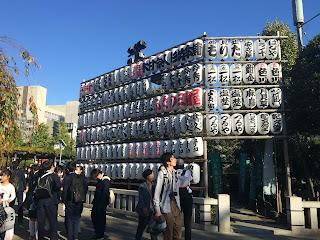This video is made from Isys100 group - Japanese Culture and it's specifically talking about the most popular delicious Japanese food worldwide. we are actually talking about four types of food:
Sushi:
The word "sushi" is often ambiguous for non-native Japanese. We think of it as being interchangeable with raw fish. Sushi is vinegared rice topped with other ingredients.
Tempura:
Tempura is a popular element of Japanese cuisine, and consists of battering fish and/or vegetables and deep frying them. It is distinguished from many other battered and deep fried foods by being much lighter and tending to carry less grease. In addition to being served at many restaurants, tempura is available in Japan at roadside stands, where it is often sold in paper cones for consumption while strolling the street. This style of deep frying is also popular in the West, where it is served at many Japanese restaurants.
A
curry is the antidote to winter, cold wintry weather calls for hot,
warming meals. This curry is sure to warm them up, mild, yet tasty its
one for all the family. Serve it with steamed rice, Indian breads or
pappadums.
- See more at:
http://www.beefandlamb.com.au/Recipes/All_recipes/Detail/Mild-curry-beef-casserole#sthash.90Lhon7a.dpuf
A
curry is the antidote to winter, cold wintry weather calls for hot,
warming meals. This curry is sure to warm them up, mild, yet tasty its
one for all the family. Serve it with steamed rice, Indian breads or
pappadums.
- See more at:
http://www.beefandlamb.com.au/Recipes/All_recipes/Detail/Mild-curry-beef-casserole#sthash.90Lhon7a.dpuf
A
curry is the antidote to winter, cold wintry weather calls for hot,
warming meals. This curry is sure to warm them up, mild, yet tasty its
one for all the family. Serve it with steamed rice, Indian breads or
pappadums.
- See more at:
http://www.beefandlamb.com.au/Recipes/All_recipes/Detail/Mild-curry-beef-casserole#sthash.90Lhon7a.dpu
Ramen:Japanese noodle soup made commonly from either pork bone broth or chicken bone broth — is a dish that has taken Sydney by storm. Debate rages among educated local food lovers about who makes the city’s “best” ramen, although those who love the soup caution against labelling one better than another.
















































